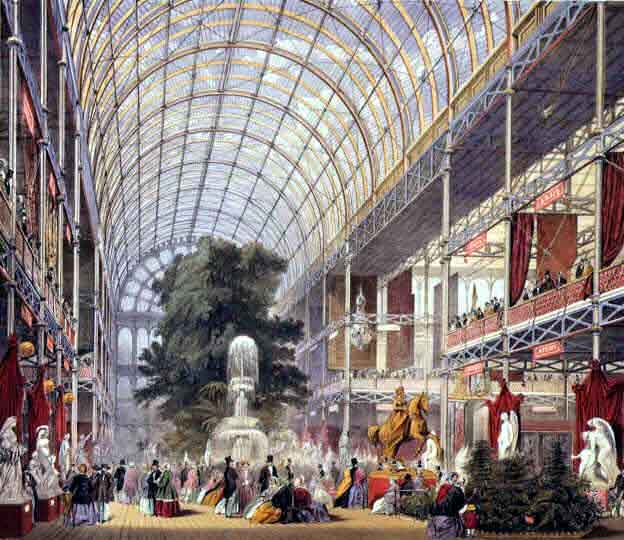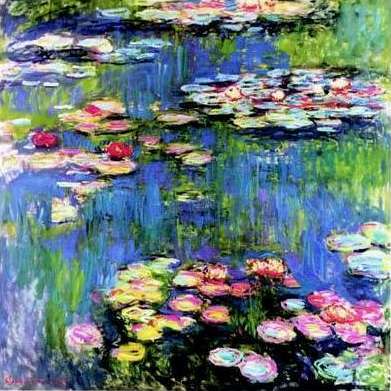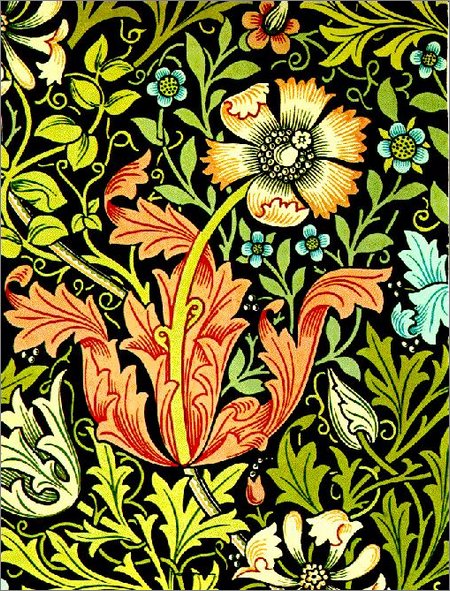The Industrial Revolution had been essential in terms of prosperity, but on the other hand it had created greater class differences. Victorian writers based much of their literature on dealing with contrasts between the different classes in society, as well as the terrible conditions the poor was suffering from. Based on the theories of Charles Darwin and other scientists, writers also focused on analyzing loss of faith in traditional values in the late 1800’s. This reflected a pessimistic view that appeared in much Victorian literature towards the end of the 18th century, dealing with themes such as culture, religion and society. A lot of the English literature of that time expresses the experience of Imperialism. The Victorian era saw the novel become a leading form of literature.
Architecture
While the previous century had been characterized by classical style buildings, the Victorian era (1837-1901) returned to traditional British styles in architecture. Some of the most popular were throwbacks such as Tudor (the Tudor period 1485-1603), medieval and mock-Gothic (termed the Gothic Revival). Houses built in these styles were often large and rather inconvenient to live in. The early Victorians were all about details and decoration, and designs could be meticulous to the point of overwhelming. Some examples of houses with Victorian architecture are Highclere Castle in Hampshire and Kelham Hall in Nottinghamshire. Later into the era, the style changed into more of a simple style, using traditional models such as the English farmhouse. The Industrial Revolution made it possible to use new important materials such as iron and glass. The Crystal Palace is perhaps the best example of these new materials being used, being built by Joseph Paxton for the Great Exhibition of 1851.

Source
Paintings
There were several artistic movements in the Victorian era, with Classicism, Romanticism and Impressionism being some of the most illustrious. Paintings of Classicistic style had great focus on capturing spontaneous expression of emotion over reason. The Romantic school saw their paintings portray dramatic events in particular, using strong and often lavish colors. Impressionist painters focused on the changing effects of light and color. Two famous painters of the Impressionist school are Claude Monet and Pierre-Auguste Renoir. Some painters were left frustrated by what they looked upon as sheer limitations of Impressionism, and painters including the famous Vincent Van Gogh developed a style later entitled Post-Impressionism.

Claude Monet (Source)

Claude Monet - Water Lillies (1916) (Source)

Vincent van Gogh (Source)
Charles Dickens
Charles Dickens (1812-1870) is one of the most popular English novelists of the Victorian era, and widely considered to be one of the greatest English writers of all times. His literary style can be characterized as a mixture of fantasy and realism, and he could be exceptionally creative with characters, once giving a person the name “Noble Refrigerator” in one of his satires of British aristocratic snobbery. He wrote entertaining, compassionate and poetic, much to the enjoyment of crowds he read his novels to. Some of his most notable works are Oliver Twist (1838), David Copperfield (1850) and Great Expectations (1860-61 in serial form). Dickens was also an active social campaigner, expressing deep concern for social injustice. He was not an openly political writer, but he touched on social issues such as child labour, the financial and legal system.

Charles Dickens (Source)
William Morris
William Morris (1834-1896) is another important figure in the Victorian era of England. He worked mainly as a furniture and textile designer and writer, although he had great influence in other arenas such as architecture as well. A socialist, he had connections to Pre-Raphaelite Brotherhood (inspired by the famous Rafael of the Italian Renaissance, this group of English painters rejected the conventions of industrialized England, instead painting detailed and colorful pictures directly from nature). Together with his artist friends Edward Burne-Jones and Dante Gabriel Rossetti, they were key figures in “the Arts and Crafts Movement”, a movement wanting to reintroduce the use of high quality materials and detailed, hand-made excellence in all fields of art and decoration. As a writer, he wrote and published poetry, fiction, essays and translations of ancient and medieval texts. He is well known for his novels A Dream of John Ball (1888), about the English peasants’ revolt of 1381 and the rebel John Ball, and The Sundering Flood (1897), a fantasy novel. His works are still popular, inspiring many present-day artists.

Wallpaper design by William Morris (Source)
Sources:
http://www.associatedcontent.com/article/22813/an_analysis_of_literature_during_the.html?page=2&cat=37
http://www.erasofelegance.com/history/victorianarts.html
http://www.britainexpress.com/History/victorian_art_and_architecture.htm
http://en.wikipedia.org/wiki/Charles_Dickens#Literary_style
Aschehoug; Impressions; page 147-148
http://en.wikipedia.org/wiki/William_Morris
Art and literature in the American Victorian era
Art and literature
American art and literature was greatly influenced by Great Britain during the Victorian era (see “art and literature in the UK”). In addition, many fields of art in the American Victorian era were to a certain point influenced by circumstances during and in the aftermath of the Civil War (1861-65). Writers used the war as a backdrop for their literary writings about American characters. For artists, art and literature became an important way of expressing their opinions about the war.
Mark Twain
Samuel Langhorne Clemens (1835-1910), best known by his pen name Mark Twain, was an American author and humorist. He is one of the most widely celebrated American writers of all time and is by some considered to be the father of American literature. His most notable novels are Adventures of Huckleberry Finn, which has been praised as the Great American Novel, and The Adventures of Tom Sawyer. In all, he published over 30 works of literature, encircling genres such as novel, satire, historical fiction, short stories and nonfiction. He often combined rich humor, sturdy descriptions and social criticism, and he brilliantly mastered colloquial speech. Aside from being an immensely popular author, he was also a social critic. In the latter stages of his life, he firmly stated himself an anti-imperialist and anti-capitalist.

Mark Twain (Source)
Kate Chopin
Kate Chopin (1850-1904) was an American author, considered by many as a forerunner of American feminist authors. Her literary career was short, but she managed to write two novels, more than 150 short stories and sketches, and a great amount of poetry, reviews and criticism. In her literary works, she often focused on understanding and analyzing issues of society, particularly putting much emphasis on women’s struggle in a male-dominated society. She is most famous for her short novel The Awakening (1899), in which she describes a young woman’s psychological and sexual awakening. The sensual descriptions, however, caused a lot of negative criticism.

Kate Chopin (Source)
Sources
http://en.wikipedia.org/wiki/Mark_Twain
http://www.geocities.com/swaisman/
Aschehoug; Impressions; page 25
http://en.wikipedia.org/wiki/Kate_Chopin
Ingen kommentarer:
Legg inn en kommentar